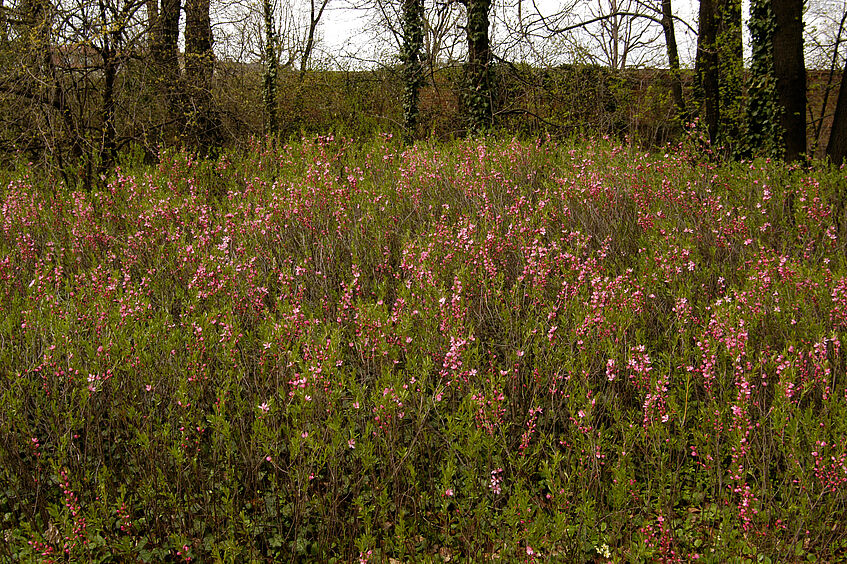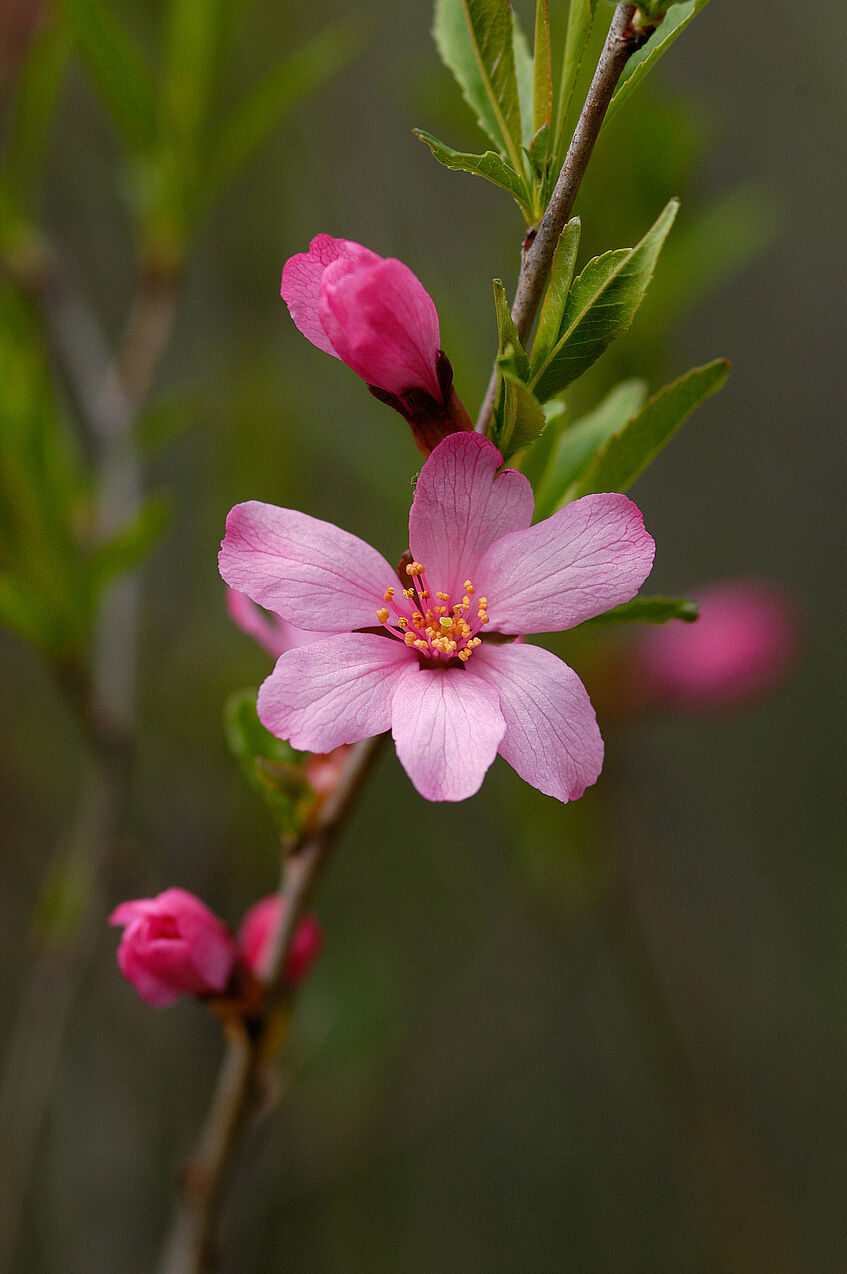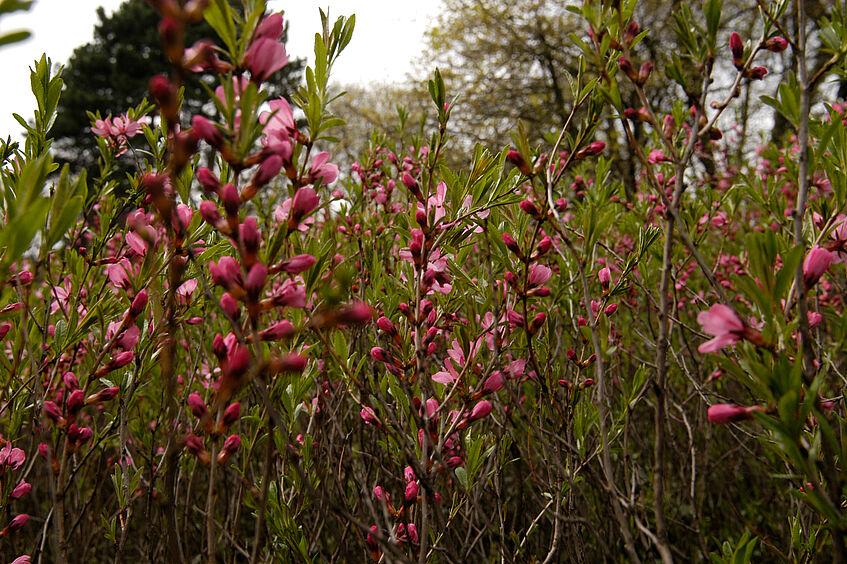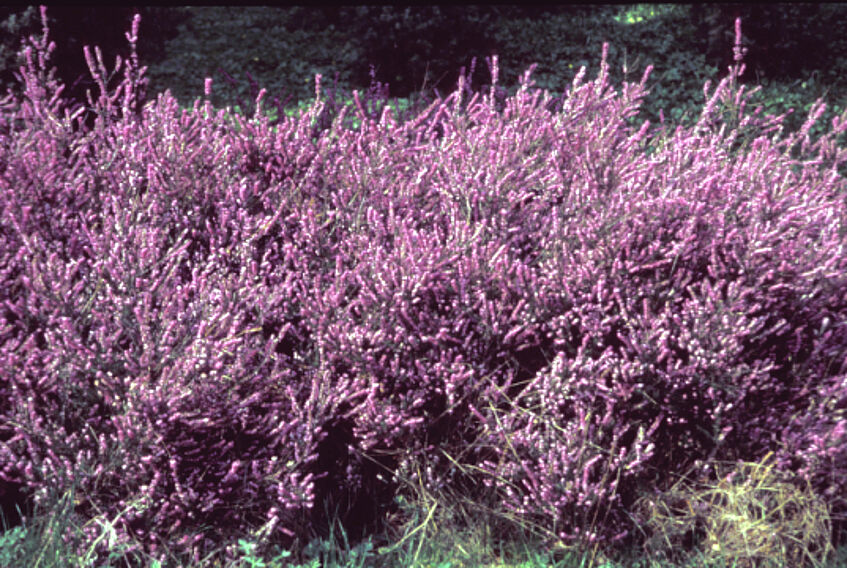Prunus tenella (= Amygdalus nana) – Dwarf Russian almond

Prunus tenella - © BGUW_R. Hromniak

Prunus tenella - © BGUW_R. Hromniak

Prunus tenella - © BGUW_R. Hromniak

Prunus tenella - © Kiehn
Location in the garden: area 38
The dwarf Russian almond in the Botanical Garden of the University of Vienna is planted within the Pannonian collection. There it forms a relatively dense population at the border of a wooded band. The species is listed as severely endangered in the Austrian Red List and naturally occurs only in eastern parts of Austria with a Pannonian climate. There it forms stands at the borders of woods, hedgerows, and fields. The species has its main distribution in the Pannonian/Pontic/SW Siberian floral regions, so it reaches its western distribution limit in eastern Austria.
The common name of this plant may be misleading because it does not represent a dwarf form of the almond tree (Prunus dulcis), but is a well defined distinct species.
Prunus tenella is a shrub of 0.5-1.5 m, with abundant purple-pink flowers. The flowers appear in great numbers in April/May, and at that time it is particularly attractive. It has therefore been in cultivation in gardens for many years. There are cultivars with particularly large or deep-purple flowers. Its glossy, dark green leaves also have decorative value after flowering. The stone fruits of the dwarf Russian almond are not perforated (while those of the almond tree exhibit characteristic pores).
Given its small height it could be an appropriate tree for small house gardens or heath gardens, but Prunus tenella spreads relatively quickly by subterranean runners. This has to be taken into account for horticultural purposes. Regarding habitats the dwarf Russian almond is undemanding; it is completely hardy, heat-resistant, and tolerates all kinds of porous, normal garden soil. Good drainage is advantageous, and its tendency to spread increases in light, sandy soil.
The dwarf Russian almond is well suited for roadside greenery, including in urban areas. In Lower Austria for instance it is successfully planted beneath street trees with small crowns. The island-like flowerbeds limit their spread, so such areas need little maintenance.
Prunus tenella, like other Prunus species, is particularly prone to Monilia, a fungal disease characterized by abrupt withering of flowers and young shoots. Flowers remain dry on the twigs and severe cutting-back and subsequent burning is recommended.
In general, cutting back of twigs by about two thirds stimulates flower formation, because the flowers buds are formed on the previous year's twigs.
